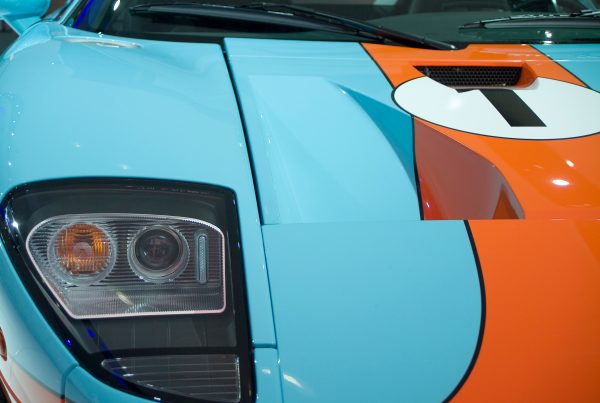Tiny, Mighty, and Instantly Recognizable – How Mini Redefined Small Car Design
Forty-one years. 5.3 million units built. Pop culture star of action movies, TV shows, and glossy fashion layouts; favorite of celebrities of the day. Motorsports winner besting much bigger machines. Runner-up for international Car of the Century awards. The classic Austin Mini not only accomplished a lot during its 1959-2000 history; many of the innovations introduced by this British best-seller continue to influence the automotive industry to this day.
Necessity, the Mother of Mini
During the Suez Crisis of 1956-1957, complex geopolitics involving Egypt, Israel, Great Britain, France, the United States, the Soviet Union, and other nations closed the Canal to shipping. Since two-thirds of the oil used in Europe passed through the Canal, supplies quickly dwindled, leading to fuel rationing in Britain and elsewhere. With no gas to power big cars, sales plummeted, as small cars like the original Fiat 500 and three-wheeled German bubble cars took the lead. Despising both bubble cars and the loss of sales, Leonard Lord, head of British Motor Corporation (BMC), quickly ordered up what he called a “proper miniature car”. Among his design dictates: the car should fit in a box that measured 10 x 4 x 4 feet, with passenger space occupying most of the interior and use of an existing engine saving cost.
The assignment went to Alec Issigonis, born in Smyrna, Ottoman Empire, in 1906. Although Greek, his father held a British passport, leading the family to immigrate to England in 1923. Following engineering studies, Issigonis worked at several automotive companies before being recruited by BMC in 1955 to work on a new model family of three cars, including a small-town car. With the Suez Crisis, the small car took prominence, becoming a running prototype by 1957 and launching in August 1959 under two BMC brand names: Morris Mini Minor and Austin SE7EN (soon known as the Austin Mini). Later, the car was simply called the Mini.
What Issigonis and his team of just 10 designers brought to the Mini was a host of innovations that redefined the small car genre. Combining minimum exterior dimensions with seating for four passengers plus luggage, lively driving characteristics, eye-catching shape, and superior fuel economy with an affordable price, Mini soon became a cult favorite for motoring and pop culture enthusiasts alike.

Technology with a Purpose
The brilliance of Issigonis’ response to the Suez Crisis lies in the fact that his solutions exist for a reason; everything he did was aimed at achieving the overall goal.
- Using an existing BMC water-cooled, inline four-cylinder engine and placing the transmission beneath it in the sump, the assembly was mounted transversely to take up less space.
- Mini revived the use of front-wheel drive, which had been largely ignored since the 1930s, to improve fuel efficiency and produce better traction and handling.
- Putting the carburetor at the back of the engine reduced loads on the gearbox and prevented rapid wear.
- A specially designed, compact suspension system used rubber cones rather than traditional steel springs, saving weight and space.
- Ten-inch wheels were pushed as far as possible to the outside corners, yielding a wide stance and freeing up room inside.
- Welded seams visible on the outside and external door and boot hinges were easy to assemble and kept labor costs down. (In early models, the boot lid was hinged at the bottom to remain open while driving for more luggage space, but that feature was abandoned when it became evident that exhaust fumes were getting inside the car.)
- Sliding windows in the doors allowed for storage pockets inside, in the area where a winding window mechanism would have been. (Hearsay said the storage pocket was sized to fit a bottle of Issigonis’ favorite gin.)
Missing from the original Mini were external mirrors, radio (Issigonis hated listening while driving), and heater, among other things. But the chain-smoking designer demanded an ashtray and got one.
Distinctive Shape, Feisty Performance, and International Recognition
Instantly identifiable, the exterior look of classic Mini remained essentially the same through seven model iterations (Mk I through Mk VIII) across the entire 41-year production run. Over time, modifications such as larger doors with concealed hinges, bigger rear side windows, and front windows that wound up and down, were accompanied by various technical changes. Throughout the swinging 1960s, Mini was a best-selling fixture of popular culture, owned by all four Beatles, Mike Jagger, Peter Sellers, Steve McQueen, James Garner, Twiggy, Enzo Ferrari, and many more. Throughout its lifetime, the car was available as multiple variants in numerous countries (except the U.S., where certain requirements were not met). Ultimately, Mini was the most popular British car ever made.
From the outset, Mini’s technical configuration yielded excellent balance, good forward traction, all-around grip, and lightweight hustle, which led to the recognition that the car could move. Modifications made by John Cooper, race car driver/builder, and friend of Issigonis, gave birth to the sporty Mini Cooper, which quickly triumphed on the track. Wins at the 1964, 1965, and 1967 Monte Carlo Rallies confirmed Mini’s competitive prowess, along with races, rallies, and endurance events around the world.
The fact that Mini was second only to the Ford Model T in earning Car of the Century recognition underscores the importance of the vehicle in the automotive pantheon. Overseen by the Global Automotive Elections Foundation, the three-year selection process began in 1996 with 700 candidates, which a jury of 100+ professional automotive journalists reduced through multiple elimination rounds to five finalists in September 1999. The winner was announced at an awards gala in December, with Mini standing proud over such august marques as Audi, Bugatti, Ferrari, Jaguar, Mercedes-Benz, Porsche, and Rolls Royce in the search for the world’s most influential car of the 20th century.
MINI Lives On
After four decades, the last Mini, a red Cooper Sport, was built in October 2000 and presented to the British Motor Industry Heritage Trust for preservation and exhibition. By the time the production run ended, Mini had undergone three ownerships, British Motor Corporation (1959-1968), British Leyland (1968-1986), and The Rover Group (1986-2000). In 1994, BMW acquired Rover, in part to gain rights to the Mini name and shape, which Rover had wisely trademarked during its tenure.
Moving quickly to capitalize on widespread recognition of the brand, BMW showcased a new concept at the 1999 Paris Auto Show, followed by a 2001 launch. Although somewhat larger than the old Mini and reengineered to comply with upgraded safety, emissions, performance, and comfort standards, the new version, now dubbed MINI, earned prestigious North American Car of the Year status in 2003. Today, the North American lineup encompasses seven models in various configurations. And to ensure the future of Mini innovation, 45,000 reservations are already booked for the upcoming all-electric MINI E.



